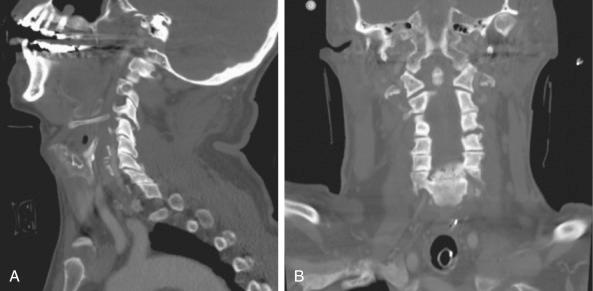Physical Address
304 North Cardinal St.
Dorchester Center, MA 02124
|
|
|
|
Vertebral artery injury (VAI) secondary to blunt trauma has become an increasingly discussed topic. Initially, these injuries were thought to be extremely rare events with minimal significance. However, studies using rigorous screening protocols demonstrated that VAIs occur with some regularity (the overall incidence in blunt trauma is approximately 0.5%) and can be associated with significant morbidity. Some of these investigators argued that routine anticoagulation is effective and should be considered for patients with these injuries. However, other studies concluded that no compelling evidence exists to recommend treatment of asymptomatic traumatic blunt VAIs (BVIs).
Although the overall incidence of VAI in patients who have sustained blunt trauma is approximately 0.5%, the incidence is certainly higher in certain subsets of patients. Seventy percent of patients with traumatic VAIs have an associated cervical spine fracture. Cervical spine injuries associated with increased VAI include subluxations and dislocations, fractures involving the transverse foramen, and fractures of the upper cervical spine (C1-C3) ( Fig. 20-1 ). Other patients considered at higher risk and potentially requiring screening include those with basilar skull fractures, significant facial fractures, cervical hematomas, neurologic examination findings inconsistent with head computed tomography (CT) scans, or lateralizing neurologic examination findings.

In general, most traumatic BVIs occur after high-energy mechanisms, often with rapid deceleration. Most of these injuries occur after motor vehicle accidents, after falls, or when pedestrians are struck by vehicles. Another rarely cited reason for BVI is chiropractic manipulation. In a large review of published case reports from 1934 to 2003, Ernst found 26 published fatalities associated with chiropractic manipulation. At least 6 of these deaths were believed to have resulted from vertebral artery dissection. The true incidence of such events is difficult to estimate, however. Aside from traumatic BVI, the other major category of traumatic VAI includes penetrating injuries, such as gunshot wounds and lacerations. Traumatic VAIs from lacerations have a high mortality rate related to bleeding.
Become a Clinical Tree membership for Full access and enjoy Unlimited articles
If you are a member. Log in here